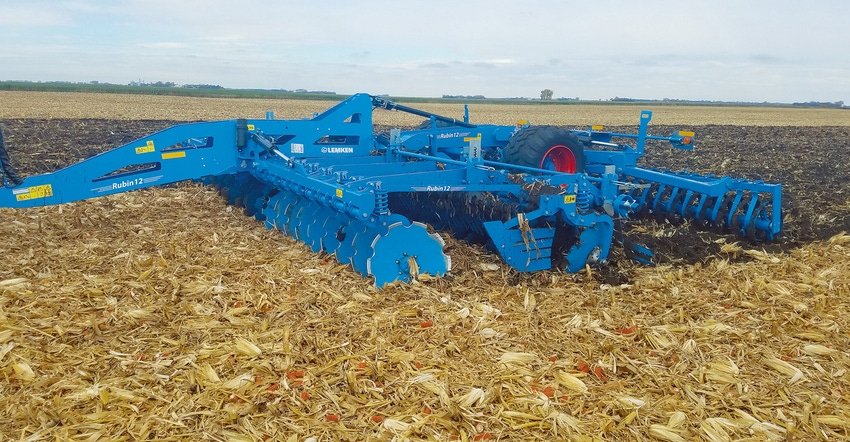October 26, 2020

The dry, warmer-than-normal growing season this year presents significant challenges for managing soil and crop residue this fall. Some farmers are tempted to till the soil to try to get additional moisture to soak in from rainfall and snow. Soil experts, however, say that’s a common misconception.
Doug Peterson, soil health specialist with the Natural Resources Conservation Service in Iowa, says tilling the soil will actually accelerate the drying process and cause soil to erode more easily. The combination of high winds and warmer-than-normal temperatures wastes water if soils aren’t covered.
“Ground cover, whether it’s living cover or crop residue, limits the drying effect of wind, shades soil from the sun and traps snow during winter,” he says. “This adds up to more water infiltrating into the soil and less evaporating into the air.”
Weigh pros, cons
Dry soil is preferred for doing tillage. The advantage of having low soil moisture for tillage is a reduced impact of equipment traffic in causing soil compaction and ruts in the field. “However, soil disturbance under dry or any other conditions destroys soil structure and increases the potential for soil erosion after rain events,” notes Mahdi Al-Kaisi, Iowa State University Extension agronomist specializing in soil management. “Tillage increases the loss of topsoil, organic matter and nutrients.”
Lack of soil moisture, especially in the top 12 inches where most tillage occurs, can produce unfavorable conditions for soil fracturing. The excessively dry soil can produce large clods when tilled this fall, and those clods aren’t easy to break with secondary tillage in the spring. Also, tilling excessively dry soil can be costly in fuel and time use as compared to soils with normal field moisture. Effectiveness of incorporating crop residue may be limited in dry situations and the lack of moisture will reduce the breakdown of crop residue.
Residue helps trap moisture
“The best option for managing dry soils and crop residue under dry conditions is to limit soil disturbance and keep crop residue on the soil surface,” says Al-Kaisi. Crop residue can help mitigate drought conditions by trapping rain and snow moisture to recharge the soil profile for the following season. It’s been documented by research studies that keeping residue undisturbed on the soil surface with no-till can trap 70% more of the water in rain or snowmelt than conventional tillage.
Conservation practices play a major role in managing soil moisture. The absence or reduction of soil disturbance in no-till both minimizes soil moisture loss from the soil's surface and maximizes soil moisture storage. Conservation practices also enhance beneficial soil physical properties, such as increased water infiltration, maintenance of soil macropores and reduction of surface runoff during rain events, thus increasing soil moisture storage.
“Generally, every tillage pass can cause the loss of a quarter-inch of soil moisture,” Al-Kaisi says. “But this number varies based on soil texture, soil organic matter content and the amount of residue on the soil surface. With the unpredictability of weather and to ensure maximum soil moisture storage, precaution should be taken in using tillage to manage dry soils this fall, and farmers should keep residue upright on the soil surface to increase the soil profile moisture recharge.”
For more insight into crop residue and tillage considerations for this fall, read Al-Kaisi’s article on the ISU website.
Managing volunteer corn
Many cornfields were knocked down by the August derecho windstorm. If you are disking the downed cornstalks or using vertical tillage or shredding, that will reduce the size of the crop residue, speed up decomposition and encourage some corn grain to germinate this fall. More germinating this fall equates to less volunteer corn next spring.
If choosing to disk the field, minimal soil disturbance is recommended to avoid potential erosion, prevent soil structure degradation and assist with better water infiltration. Looking ahead to next spring, soybeans can be forgiving when planted into high amounts of corn residue. Keep in mind that high populations of volunteer corn may emerge next spring even after disking, vertical tillage or stalk shredding this fall. Planting soybeans in those fields instead of corn on corn next spring would be a wise move. Soybeans offer more herbicide options for controlling volunteer corn.
About the Author(s)
You May Also Like






